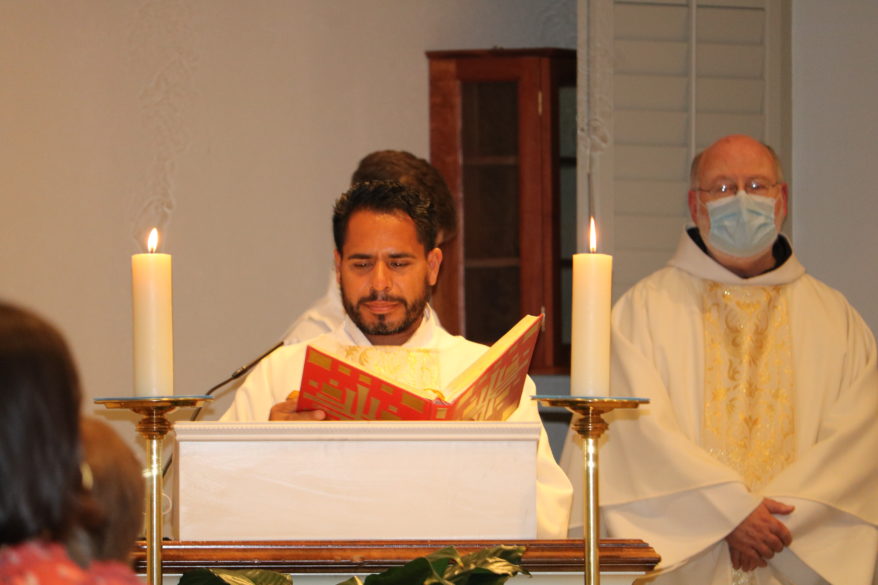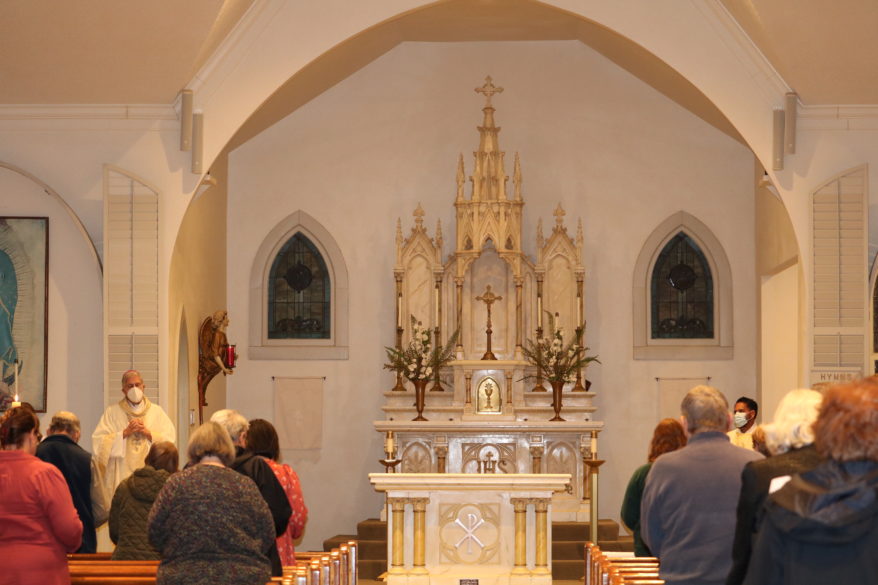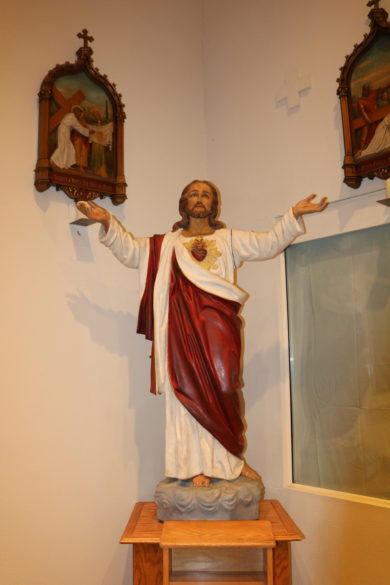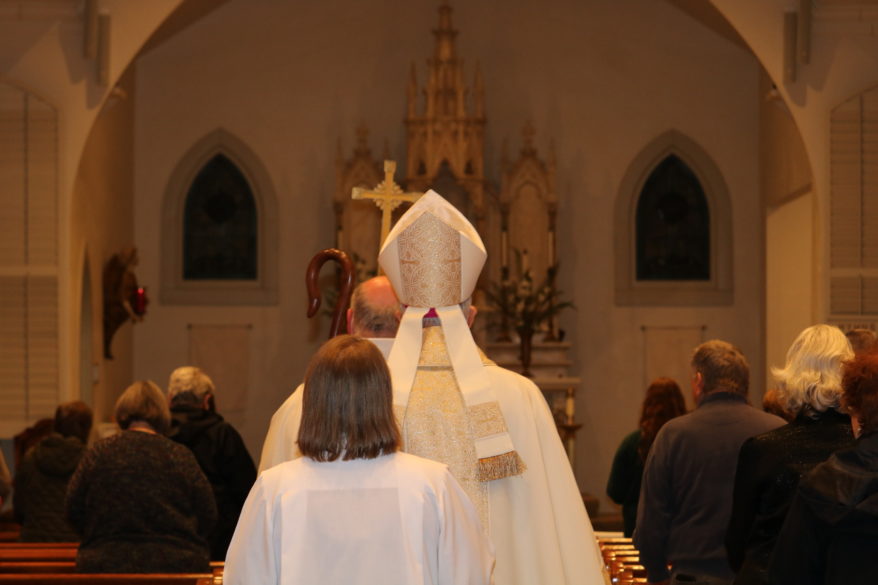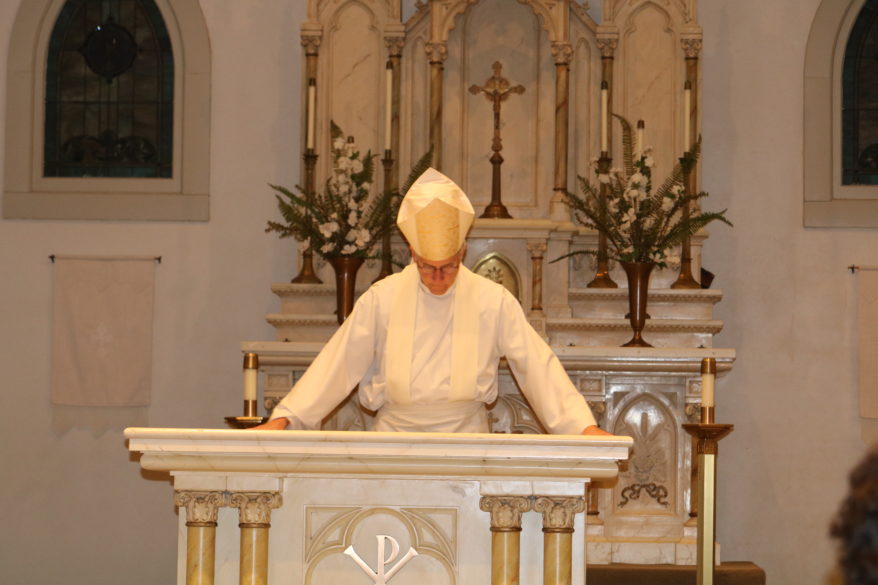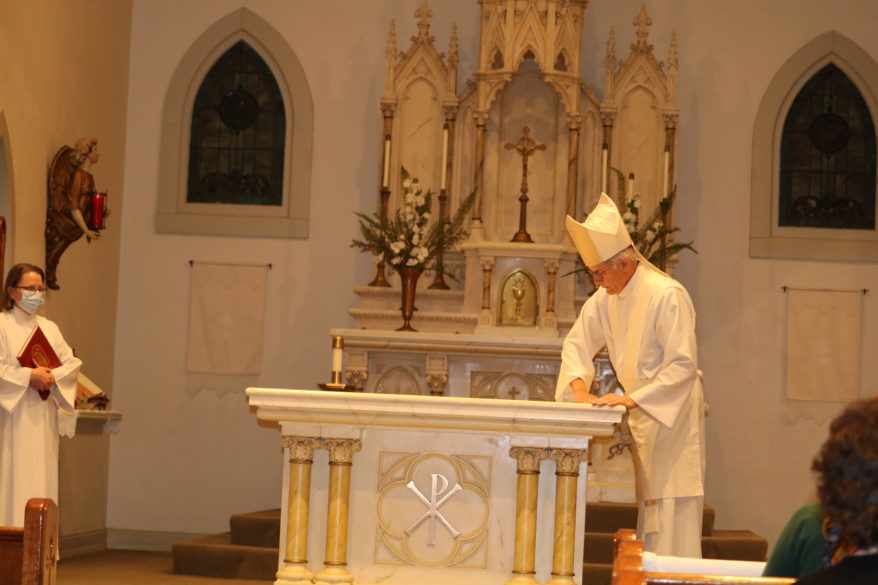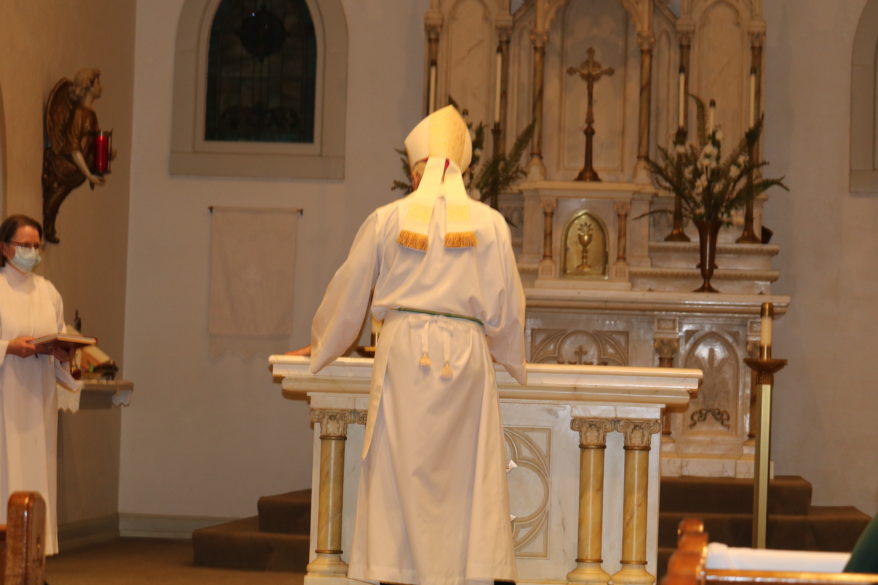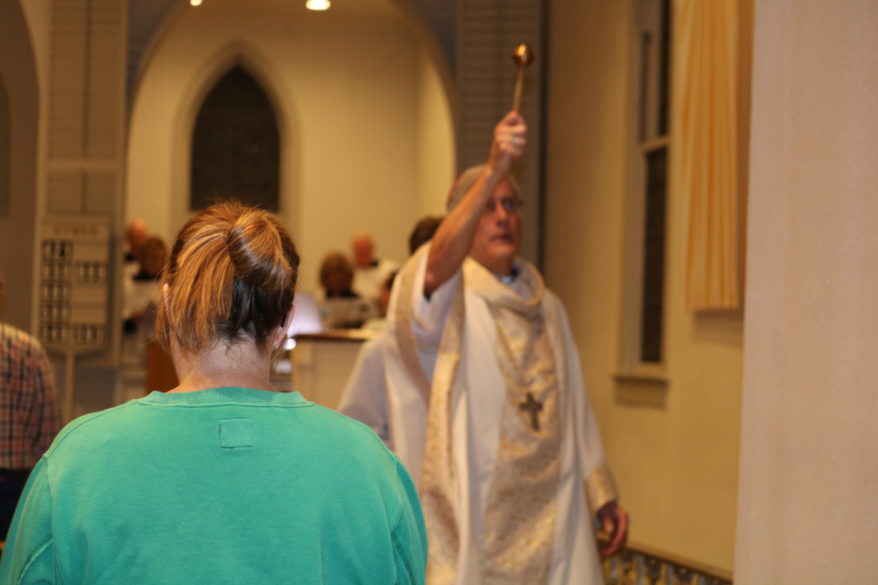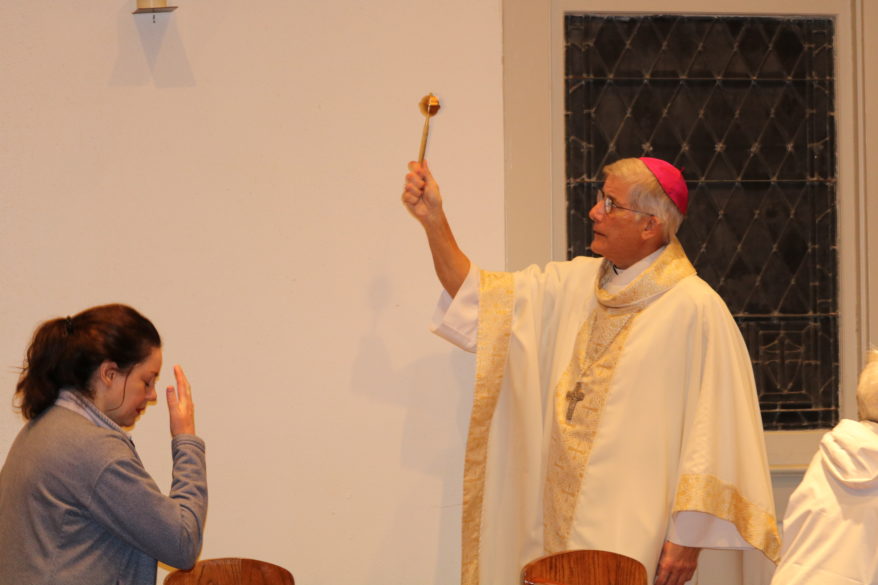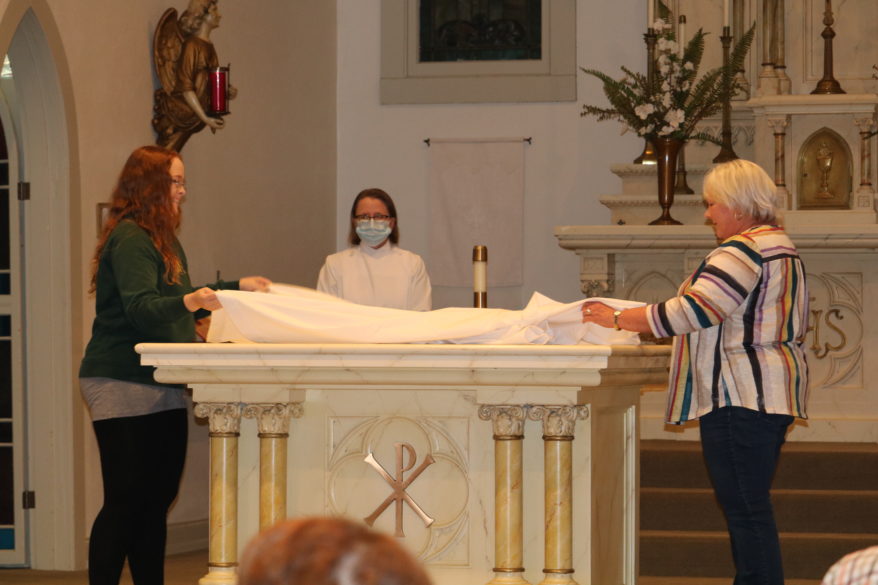
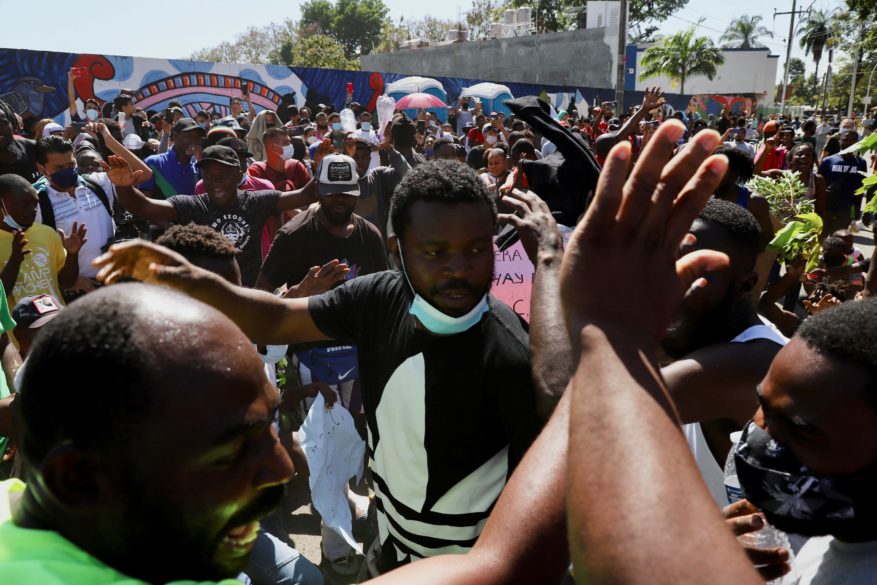


Por Rhina Guidos
WASHINGTON (CNS) – Republicanos están divididos sobre un proyecto de ley de inmigración presentado por miembros de su propio partido que otorgaría la ciudadanía a millones de personas que se encuentran en el país sin permiso legal.
La congresista María Elvira Salazar, de Florida, en una conferencia de prensa el 9 de febreo, habló sobre la Ley de Dignidad, un proyecto de ley que ayudaría a aquellos que fueron traídos al país como menores sin permiso legal y otros que contribuyen a los EE. UU. mientras que también se enfocaría en reforzar la frontera.
“Estados Unidos ha sido históricamente un faro de refugio para quienes huyen de la violencia y la opresión o buscan una nueva vida y oportunidades”, dijo Salazar. “En las últimas décadas, se ha explotado nuestro fallido sistema de inmigración, lo que ha llevado a una situación que es impropia de nuestra gran nación”.
“Si bien Estados Unidos es una nación de leyes, también somos una nación de segundas oportunidades”, dijo. “A través de la dignidad y una oportunidad de redención, este legado puede continuar”.
Salazar presentó algunas de las disposiciones de la propuesta que incluyen que los inmigrantes paguen $1,000 anuales durante 10 años en un fondo como restitución y ese dinero ayudaría a capacitar a otros trabajadores.

La medida “agilizaría” el camino para los menores que ingresaron ilegalmente al país cuando eran niños y reforzaría las estructuras y los sistemas en la frontera de EE. UU. con México – también fundado por un impuesto que se le cobraría a los inmigrantes que solicitan legalizar su situación.
Pero “no tendrán acceso a los beneficios o derechos federales con verificación de recursos”, dijo un comunicado de prensa que describe el proyecto de ley.
Los miembros del propio partido de Salazar se opusieron, exponiendo las divisiones dentro del Partido Republicano entre los que quieren respaldar la reforma migratoria y los que se oponen por completo, calificándola de una especie de “amnistía”.
“Le he pedido a algunos de mis colegas que me expliquen y que me den una definición rigurosa de lo que significa (amnistía). Nadie me la ha podido dar”, dijo Salazar.
El republicano Ronald Reagan en 1986 fue el último presidente estadounidense que logró que el Congreso aprobara una legislación que legalizó, a gran escala, a grupos que habían ingresado al país sin permiso, otorgando a 3 millones de personas lo que algunos llaman “amnistía”.
El republicano de Texas Pete Sessions, así como los miembros republicanos Jenniffer González-Colón de Puerto Rico, Dan Newhouse del estado de Washington, John Curtis de Utah, Tom Reed de Nueva York y Peter Meijer de Michigan han mostrado su apoyo al proyecto de ley.
Sin embargo, otros, como el republicano de Carolina del Norte, Madison Cawthorn, dijeron que la propuesta es “peligrosa”.
Fox News Digital, en un artículo del 9 de febrero citó a Cawthorn diciendo que cualquier propuesta debería “centrarse en las deportaciones y asegurar nuestra frontera”.
Los demócratas también han hecho repetidos intentos de reforma migratoria, pero ninguno de los proyectos de ley que han presentado ha podido obtener el apoyo de una mayoría en el Congreso.
Por David Agren
CIUDAD DE MÉXICO (CNS) – Las Hermanas de la Misericordia celebraron la liberación de seis personas en contra de la minería en Honduras, quienes pasaron casi dos años y medio en detención, en un caso que la Corte Suprema del país dijo que nunca hubiera avanzado.
“Celebramos la liberación de los (defensores del Rio Guapinol) que fueron encarcelados injustamente y juzgados por proteger a sus comunidades de la minería destructiva”, tuitearon las Hermanas de la Misericordia el 11 de febrero, dos días después de la decisión de la Corte Suprema.
“La gente de todo el mundo los apoyó porque proteger el agua no es un crimen. Merecen reparaciones”.
Seis hombres, parte de un grupo conocido como defensores del Rio Guapinol, fueron condenados el 9 de febrero por los cargos de causar daños criminales y la detención ilegal del jefe de seguridad de la empresa minera, según el diario The Guardian. Dos de los acusados fueron declarados no culpables.
Apenas un día después, la Corte Suprema de Justicia de Honduras revocó las condenas y anuló el juicio de los ocho defensores, declarando que el juez anterior no tenía jurisdicción sobre el caso.
Los cargos contra los defensores, junto con la prolongada detención y las breves condenas, generaron condena internacional y expusieron los estrechos vínculos entre las élites políticas, económicas y judiciales del país centroamericano.
Honduras ha tenido mala fama en los últimos años por los asesinatos y la persecución de los defensores del medioambiente, quienes a menudo se oponen a la construcción de represas o minas cerca de sus comunidades sin su consulta.
“(Los defensores) simbolizan la solidaridad de los pueblos en defensa de la vida y la libertad. Ellos fortalecen nuestra esperanza y dan sentido a nuestras luchas”, tuiteó el padre jesuita Ismael Moreno Coto, fundador de Radio Progreso en Honduras.
Los medioambientalistas se habían opuesto a la construcción de una mina de óxido de hierro en un parque nacional, lo que contaminó el río y la fuente de agua de su comunidad. La mina es propiedad de un individuo poderoso con conexiones políticas, Lenir Pérez, según los investigadores, quienes cuestionaron las supuestas irregularidades en el proceso de aprobación y la falta de consultas comunitarias.
“(Son) las élites económicas trabajando con las élites políticas”, dijo en una entrevista Jean Stokan, coordinadora de justicia de las Hermanas de la Misericordia de las Américas.
Las Hermanas de la Misericordia, quienes han tenido presencia en Honduras durante 60 años, abogaron por la comunidad de Guapinol antes de la detención y juicio de los medioambientalistas.
Las hermanas llevaron el caso a la Embajada de EE.UU. en Honduras, donde Stokan recordó que le dijeron: “Estamos hablando entre bastidores”. Las hermanas querían que la embajada hablara públicamente.
Finalmente la embajado lo hizo en diciembre, luego de que Honduras eligiera una nueva presidenta, Xiomara Castro, quien prometió justicia para los medioambientalistas y dijo que abordaría temas como la pobreza y la violencia.
Stokan dijo que estaba “extremadamente esperanzada” con la presidencia de Castro, pero le dijo a oficiales que se enfocaran en algo más que frenar la corrupción.
“Esta presidenta necesitará el apoyo de Estados Unidos para todo el proyecto que está tratando de presentar”, dijo Stokan.
Por Carol Zimmermann
WASHINGTON (CNS) – La Cuaresma, la temporada espiritual de oración y sacrificio, tiene un atractivo adicional este año porque una vez más – por tercera vez, más precisamente – estará bajo la nube de la pandemia de coronavirus.
Y aunque la tercera Cuaresma en una pandemia puede parecerse mucho a la tercera caída de Jesús en el camino al Calvario, las personas que hablaron con Catholic News Service se enfocaron más en el camino de la temporada hacia la Pascua y cómo la Cuaresma de este año también coincide con un optimismo en torno a la caída de casos de COVID-19 en Estados Unidos.
“Es como una tormenta perfecta: números más bajos (de coronavirus) justo cuando se acerca la Cuaresma”, expresó Mary DeTurris Poust, exdirectora de comunicaciones de la Diócesis de Albany, Nueva York.
Poust, quien enseña yoga, dirige retiros, y escribe un blog llamado “Not Strictly Spiritual” (No estrictamente espiritual), indicó que durante los retiros virtuales recientes que ha dirigido, es evidente el deseo de la gente de volver a conectarse en persona.
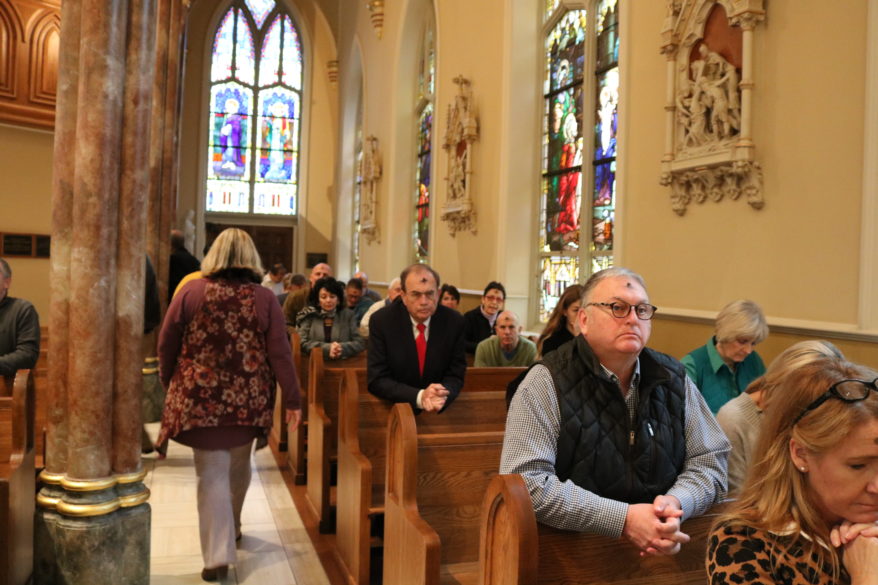
Y tal vez esta Cuaresma, que comienza con el Miércoles de Ceniza el 2 de marzo, es el momento de hacer precisamente eso, señaló Poust, estar con la comunidad parroquial – reunirse para misas, para servicios de oración, como también para las cenas que incluyen sopa y pescado frito.
Después de las tremendas pérdidas de los últimos dos años, expresó, esta Cuaresma podría ser un buen momento para reiniciar. “La Cuaresma es la oportunidad perfecta para recalcular el GPS interno” de adónde nos dirigimos, dijo Poust, hablando no solo de individuos, sino también, más ampliamente, de lo que pueden hacer las parroquias cuando buscan dar la bienvenida a las personas.
A muchos católicos les gusta el ritual de la Cuaresma y todas sus “campanas y olores”, dijo, lo que hace que esta temporada sea una gran oportunidad “para darles la bienvenida de la mejor manera”.
Jen Sawyer, editora jefe de Busted Halo, un sitio web paulista y un programa de radio satelital, dijo que, en tiempos de incertidumbre, las personas “confían en la memoria muscular” de las prácticas religiosas tradicionales a las que están acostumbradas. Sin embargo, este año, ella cree que las tradiciones habituales de Cuaresma podrían provocar una sensación diferente.
“Parece que esta es la Cuaresma para la que estamos más preparados; todos hemos sacrificado mucho”, acotó. La experiencia del desierto de la Cuaresma ya se ha vivido y, con tanta gente agotada en los últimos dos años, dijo que esta Cuaresma ofrece nuevas oportunidades para encontrar paz, comunidad, y fe.
El padre paulista Larry Rice, capellán del campus del Instituto Politécnico Rensselaer en Troy, Nueva York, estuvo de acuerdo, y dijo que la iglesia está más que lista para la Cuaresma de 2022 y espera que esta ayude a las personas a “responder a todo el trauma por el que hemos pasado”.
“Vivimos con un trauma de bajo grado y a largo plazo”, dijo, y agregó que, para muchos, el dolor está apenas debajo de la superficie y él ve a la Cuaresma como el antídoto. “Como cristianos, creemos que nuestro destino no es el Viernes Santo. Pasamos por eso para llegar a la Pascua”, expresó.
El padre Rice también dijo que este año tiene la esperanza de que “para cuando lleguemos a la Pascua, la pandemia que estamos experimentando se verá diferente”. Y con la sabiduría adquirida en los últimos dos años, agregó: “No hay garantías, puede haber nuevas variantes (de coronavirus)”.
Las últimas dos Cuaresmas no contaron con esa misma esperanza.
La Cuaresma de 2020 comenzó sin problemas, con solo una pequeña cantidad de casos de COVID-19 en el país; sin embargo, durante la segunda semana de Cuaresma, a principios de marzo, algunas diócesis instaron a las parroquias limitar el darse la mano en el signo de la paz y la Comunión del cáliz. Para la tercera semana de Cuaresma, muchas diócesis levantaron la obligación de la misa dominical y suspendieron las misas públicas y los servicios de Cuaresma, como las Estaciones de la Cruz y los servicios de oración.
El año pasado, durante la Cuaresma, se abrieron más iglesias, aunque muchas limitaron el tamaño de las congregaciones y exigieron que los feligreses se registraran para asistir a misas. Las ventas tradicionales de pescado frito en parroquias estadounidenses regresaron – con la opción de comida para llevar – y las cenizas se rociaron sobre las cabezas de los feligreses el Miércoles de Ceniza.
Este año, las parroquias están abiertas, con diferentes regulaciones de uso de cubrebocas y distanciamiento social vigentes. Por su parte, las ventas de pescado frito durante los viernes de cuaresma han regresado a las parroquias con opciones de consumirlas en el lugar o para llevar.
“Estos últimos dos años para todos nosotros no han sido fáciles, pero Dios ha estado con nosotros”, manifestó la hermana Carolyn McWatters, liturgista y presidenta del Comité de Oración y Rituales de las Hermanas de la Misericordia.
La hermana McWatters, que vive en el Convento del Sagrado Corazón en Belmont, Carolina del Norte, y participa en el ministerio allí con las hermanas jubiladas de la orden, enfatizó la necesidad de reflexionar sobre la experiencia de la pandemia esta Cuaresma. Ella dijo que es importante reconocer cómo vivimos más allá de lo que podíamos controlar, los recursos internos en los que confiamos, y dónde vimos la bondad y la gracia en acción.
“La cruz nunca es un callejón sin salida. Señala una nueva vida. ¿Dónde están los signos de vida para mí, mi comunidad, el país, el mundo?” ella preguntó.
El crecimiento espiritual a menudo se trata de renunciar al control, indicó, lo que ciertamente fue un aspecto de la vida pandémica, pero el coronavirus también implicó las dificultades del aislamiento que experimentaron especialmente las hermanas jubiladas.
El convento, parte de un centro nacional para las hermanas de la Misericordia, había sido un lugar frecuente de reuniones y encuentros y muchos asistían a las misas y cenas dominicales, todo lo cual se suspendió durante los últimos dos años.
“Todo el mundo está esperando el final”, acotó.
La opinión de estas hermanas jubiladas de la Misericordia hace eco de lo que muchos sienten, pero la hermana McWatters también advierte contra las personas que se enfocan en ser víctimas en este momento y ven la pandemia simplemente como “pobre de mí”.
Del mismo modo, dijo, la Cuaresma no es pesimismo y ruina, sino que debe ser un “abrazo gozoso de lo que me ayudará a crecer más profundamente”.
Sawyer también enfatizó que la fe está destinada a ser alegre y dijo que Busted Halo con su “Fast Pray Give Lent Calendar” y el desafío fotográfico InstaLent tiene como objetivo transmitir eso y continuará esta Cuaresma particularmente al instar a las personas probar algo nuevo: un nuevo libro u oración, y para comunicarse con otros después de tanto aislamiento pandémico.
“No solemos pensar en la Cuaresma como un momento vibrante de conexión comunitaria”, dijo, y agregó que los católicos están “acostumbrados a la experiencia del desierto” que a menudo se asocia con la temporada. Pero esta Cuaresma, eso podría cambiar.
Por Padre Ron Rolheiser
Los primeros años de mi adultez y sacerdocio los pasé enseñando teología en Newman Theological College en Edmonton, Canadá. Era joven, llena de energía, amaba la enseñanza y estaba descubriendo las alegrías del ministerio. En su mayor parte, estos fueron buenos años.
Sin embargo, no siempre fueron fáciles. La inquietud y el caos interior nos encuentran a todos. Las demandas del ministerio, las tensiones dentro de la comunidad, las obsesiones a las que siempre soy propenso, la partida frecuente de queridos amigos de la comunidad y el constante movimiento de personas a lo largo de mi vida, ocasionalmente me dejaban en un caos emocional, sin aliento. en busca de oxígeno, luchando por dormir, preguntándome cómo iba a aquietar mi alma de nuevo.
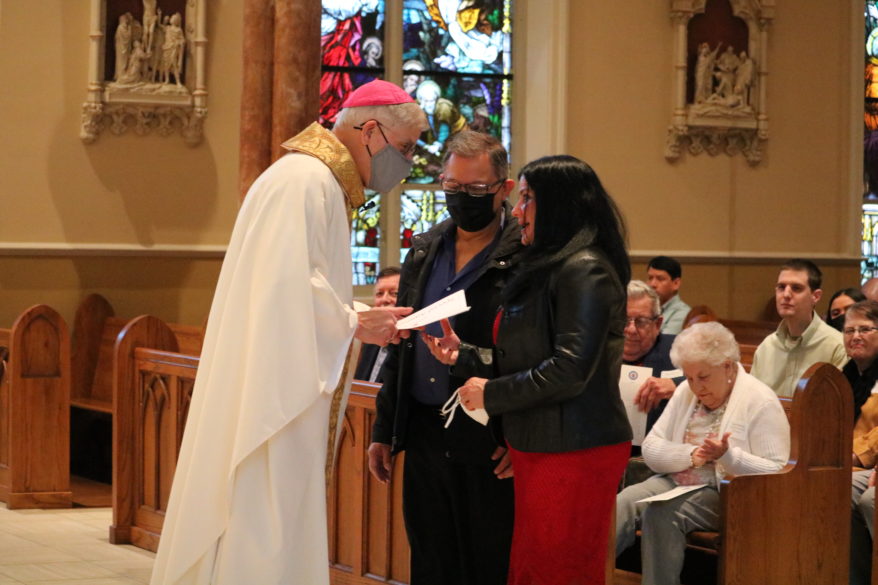
Pero, tenía una pequeña fórmula para ayudar a manejar esto. Cada vez que el caos empeoraba, me subía a mi auto y conducía cuatro horas hasta nuestra granja familiar al otro lado de la frontera en Saskatchewan. Mi familia todavía vivía en la casa en la que crecí y pude comer en la misma mesa en la que comía cuando era niño, dormir en la misma cama en la que dormía cuando era niño y caminar igual. suelo que había caminado mientras crecía. Por lo general, una casa no tardó mucho en hacer su trabajo. Solo necesitaría una comida o pasar la noche y el caos y la angustia disminuirían; Comenzaría a sentirme estable de nuevo.
Regresar a casa no curó el dolor de corazón, pero le dio al corazón el cuidado que necesitaba. De alguna manera el hogar siempre funcionó.
Hoy en día, el mismo tipo de caos emocional y angustia todavía puede perturbarme en ocasiones y dejarme inseguro de quién soy, de las elecciones que he hecho en la vida y de en quién y en qué confiar. Sin embargo, ya no puedo conducir a la casa de mi infancia y necesito encontrar el equilibrio que una vez me dio ir a casa de nuevas maneras. No siempre es evidente dónde encontrar esto, incluso en medio de una buena comunidad, una familia que aún brinda apoyo, amigos amorosos y un trabajo maravilloso. El hogar puede ser esquivo en una noche inquieta. Lo que uno necesita para estabilizar el corazón no siempre es de fácil acceso. Una vez que has salido de casa, a veces es difícil encontrar el camino de regreso allí.
Entonces, ¿qué hago ahora cuando necesito ir a casa y retocarme las raíces para estabilizarme?
A veces, un amigo de confianza es la respuesta; a veces es una llamada a un familiar; a veces es una familia que se ha convertido en familia para mí, a veces es un lugar de oración o en la naturaleza, a veces me sumerjo en el trabajo, y a veces no puedo encontrarlo y tengo que vivir con el caos hasta que, como un mal tormenta, pasa.
A lo largo de los años, descubrí que un libro especial puede llevarme a casa de la misma manera que lo hacía una vez conducir hasta allí. Diferentes personas encuentran casas en diferentes lugares. Uno de los libros que hacen esto por mí, casi sin excepción, es La historia de un alma de Teresa de Lisieux. No es sorprendente que sea la historia de un viaje recesivo, la historia del propio esfuerzo de Therese por recuperar lo que una vez le dieron su casa, su hogar y su familia. Pero el viaje recesivo en sí mismo no es lo que le da a este libro (que recomiendo encarecidamente a cualquier persona cuyo corazón duele de una manera que perturba el alma) un poder tan especial. Muchas autobiografías inquietan más de lo que tranquilizan. Esta calma tu alma.
Sin embargo, recordar por sí solo no necesariamente se preocupa por el corazón y, a veces, nuestros recuerdos del hogar y la infancia conllevan más patología y dolor que tranquilidad y curación. No todos los hogares eran seguros y acogedores. Trágicamente, el hogar inicial de uno también puede ser el lugar donde nuestra confianza y estabilidad se rompen irrevocablemente, como suele ser el caso en el abuso sexual y otras formas de abuso. Tuve suerte. Mi primer hogar me dio confianza y fe. Para los que no tuvieron tanta suerte, la tarea es encontrar un hogar, un lugar o una persona, que acaricie un alma herida.
¿Qué hace a un hogar que acaricia el alma?
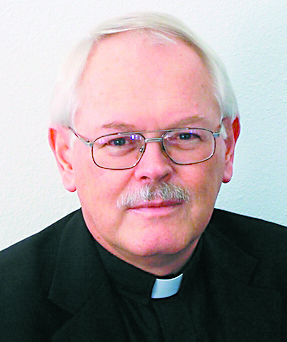
El hogar es donde estás seguro. También es el lugar donde experimentas seguridad y confianza y donde esa constancia te permite creer en las cosas de la fe. Solía conducir cuatro horas para comer o dormir una noche para encontrar eso. Hoy, necesito hacer ese viaje recesivo de otras maneras.
Es un viaje que todos necesitamos hacer en tiempos de caos y profunda inquietud en nuestras vidas, es decir, para encontrar un lugar, un espacio, un amigo, una familia, una casa, una mesa, una cama, un libro o algo que vuelve a cimentarnos en la seguridad, la confianza, la estabilidad y la fe.
Por supuesto, hay dolores de cabeza y de corazón para los que no hay cura; pero el alma no necesita ser curada, solo debidamente cuidada. Nuestra tarea es volver a casa, encontrar esas personas, lugares, oraciones y libros que nos acarician el alma en esos momentos en que nuestro mundo se derrumba.
(Reescritura parcial de una columna de 2006)
(El padre oblato Ron Rolheiser es teólogo, maestro y autor galardonado. Se le puede contactar a través de su sitio web https://www.ronrolheiser.comwww.ronrolheiser.com Ahora en Facebook www.facebook.com/ronrolheiser)
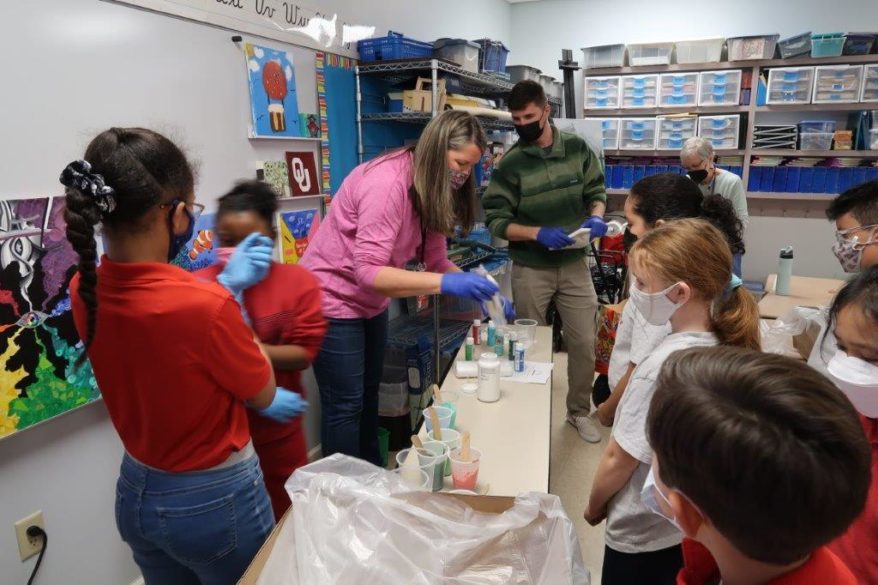
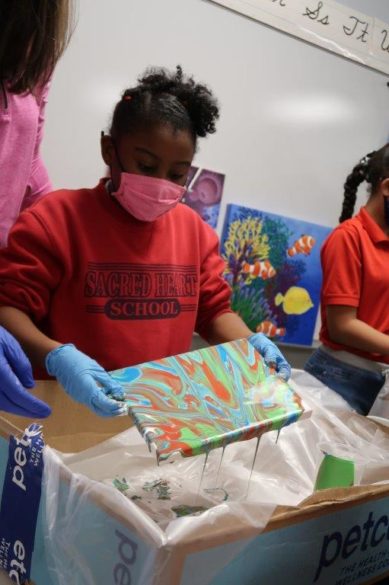
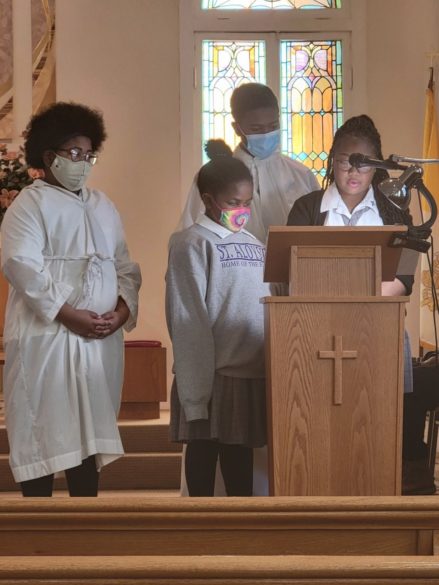
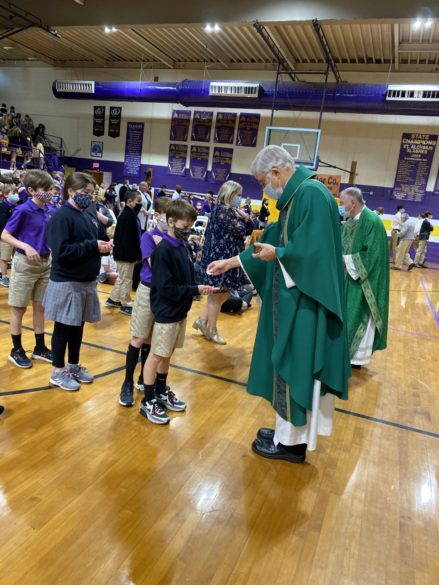
WASHINGTON, D.C. – U.S. Senator Cindy Hyde-Smith (R-Miss.) welcomed Mississippians in the nation’s capital to participate in the 2022 March for Life, greeting students and issuing an optimistic statement for the annual pro-life advocacy campaign.
On Thursday, Jan. 20, Hyde-Smith met with March for Life students from Cathedral School and St. Mary’s Basilica in Natchez. Under an “Equality Begins in the Womb” theme, Friday’s march comes on the heels of U.S. Supreme Court consideration of Mississippi’s abortion law, Dobbs v. Jackson Women’s Health Organization.
“With hope and prayer, thousands have marched each year for decades at the annual March for Life. Today, we march with greater hope and prayer for the Supreme Court to show grace to the unborn in the Dobbs case,” Hyde-Smith said.
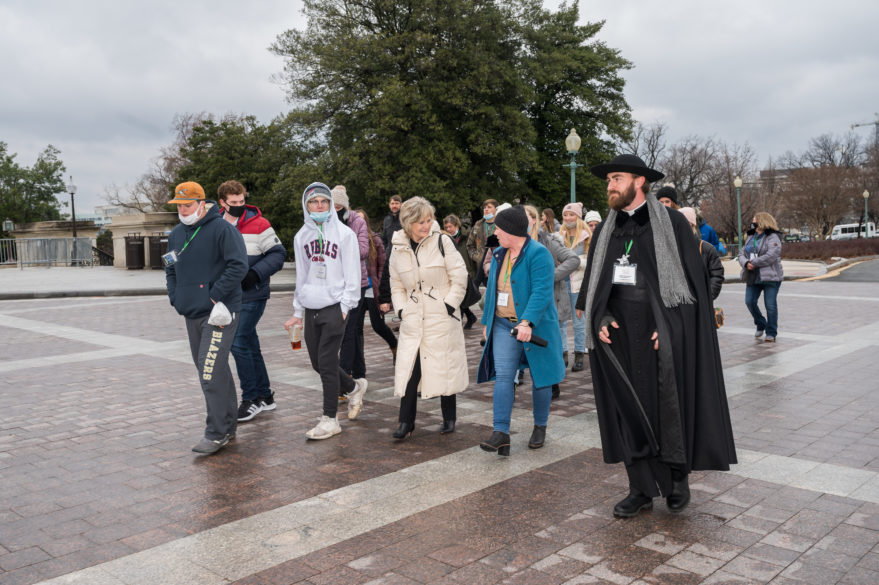
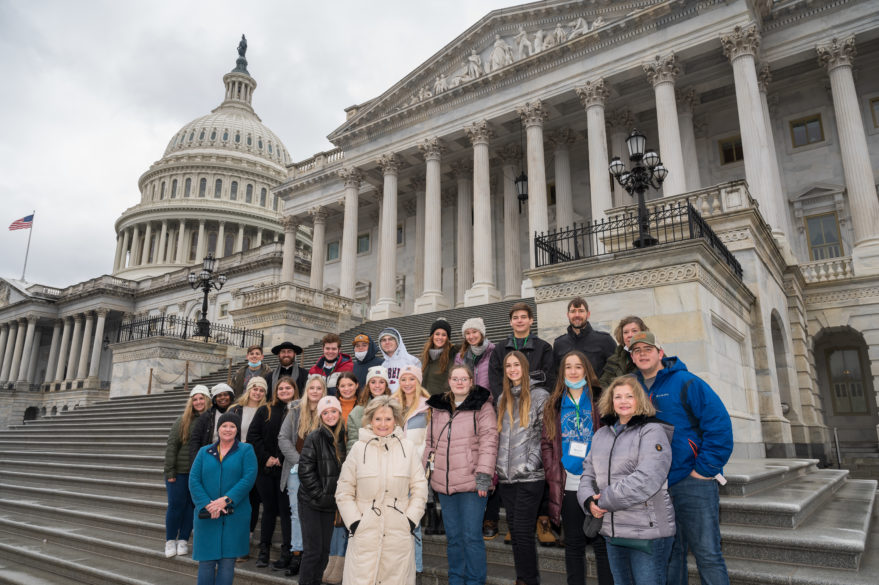

CANTON – Three young adults from Holy Child Jesus parish in Canton traveled to Miami to attend the “Journeying Together” youth leadership gathering that SEPI (Southeast Pastoral Institute) hosted Jan. 3-7. The program was centered on Pope Francis’ call to journey with the church towards synodality. Below are reflections of the young adults who attended the conference.
Victoria Alexander
I had the honor to be invited along with two parishioners from Holy Child Jesus Catholic Church of Canton to attend the SEPI journey in Miami. I learned so much from this journey through the five days that we were attending. We had various activities and experiences that we went through. We were given three spiritual words to reflect on the whole time we were there: community, beauty and mercy. We all experienced demonstrations of these words and the meanings behind them through the people we encountered or events we went to, and inspirational speakers that spoke to us about their journey on how they got where they are.
One of my favorite parts of the experience was the morning sunrise prayer we had on the beach early that morning and listening to Father read the word and Gospel was so beautiful during that moment. I had never experienced the Holy Spirit like I did that moment.
I am so thankful that I learned more about how beautiful and diverse our Catholic community and church are and what an impact young people can make in the world as young parishioners or missionaries in the church. We were so very blessed to attend this institute and I will never forget this as it has changed the way I view society and the church culture around the world.
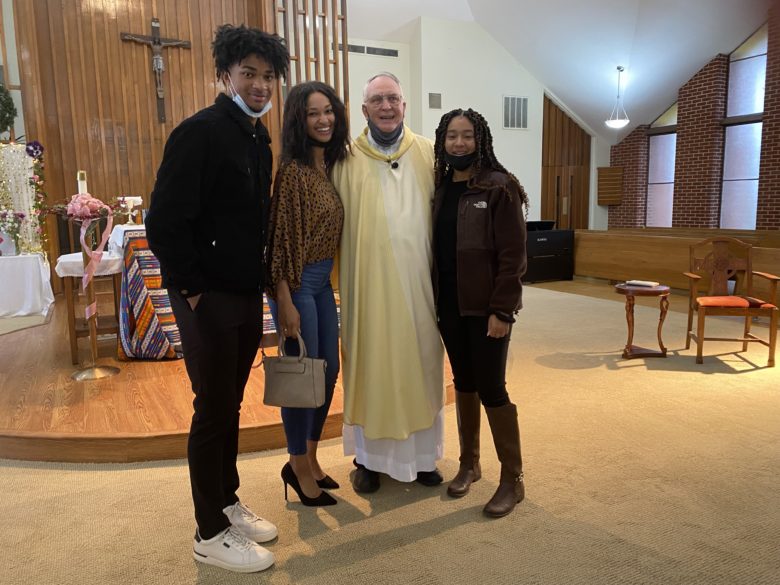
DeAsia Evans
My experience of going to Miami for the Youth Leadership gathering was very inspiring. I had the honor of going to the gathering with the help of SEPI and Catholic Extension. Youth leaders from different states all gathered to share their experiences and what they are doing to better their parish when it comes to the youth. While we were at the gathering, there were three words to remember during our time there. They were beauty, mercy and community.
Throughout my trip, I was able to experience all of those things. I saw beauty when we had sunrise prayer on the beach. We read the Gospel and said prayers as we watched the sun rise. There were even two seminarians there who shared their experience of being in seminary school and talking about how they were born in the Catholic faith. Mercy was shown through adoration when we spent a precious moment with the blessed sacrament and worshiped with The EPIC band. Lastly, community was shown when we came together and made hygiene bags, lunch and provided Christmas presents to those in need and for those who did not have a place to stay. Overall, it was such memorable experience that I will never forget, and it is something that I will do again.
Vincent Alexander
I am blessed and honored to have been chosen to attend the SEPI trip; I learned a lot and thoroughly enjoyed myself. I learned about the diversity in the Catholic community, as well as how things get more interesting within SEPI and other organizations.
One of the days I learned about how to connect with others, even those you might not expect to have a story. I learned about meeting and having a relationship with God, not just having a relationship, but also telling others to believe in him and trust in him. Making sure you have a relationship with him helps you to get where you need to go in life and to always have a relationship with him. Prioritize him.
I’ve also realized that God can change my church and help people in a variety of ways. I’d like to thank SEPI and everyone who helped make this possible for me, my church, and so many others. It was a true blessing and life-changing event.
By Joanna Puddister King
GREENWOOD – The faith-filled parishioners of Immaculate Heart of Mary in Greenwood refuse to let a break-in that desecrated their parish triumph over their spirit, choosing to forgive and pray for the Holy Spirit to fill the hearts of the perpetrators.
On Wednesday, Jan. 26 choir members arriving for practice discovered their parish had been vandalized. Some parishioners described the scene as if a tornado had blown through it.
The altar was overturned, hymnals were ripped from their spines with papers strewn around the sanctuary, the pulpit was overturned, as well. A statue of Mary, over 100 years old, was pulled down and her face broken into pieces. Many other items were turned over and bent. Also broken was an antique baptismal font.
Most disturbing for some parishioners was that the tabernacle was breached and the Blessed Sacrament removed, it being place on the church’s original altar. But through grace, the hosts did not appear to be touched. Parishioners like Mary Jane Faulkner felt the situation could have been worse.
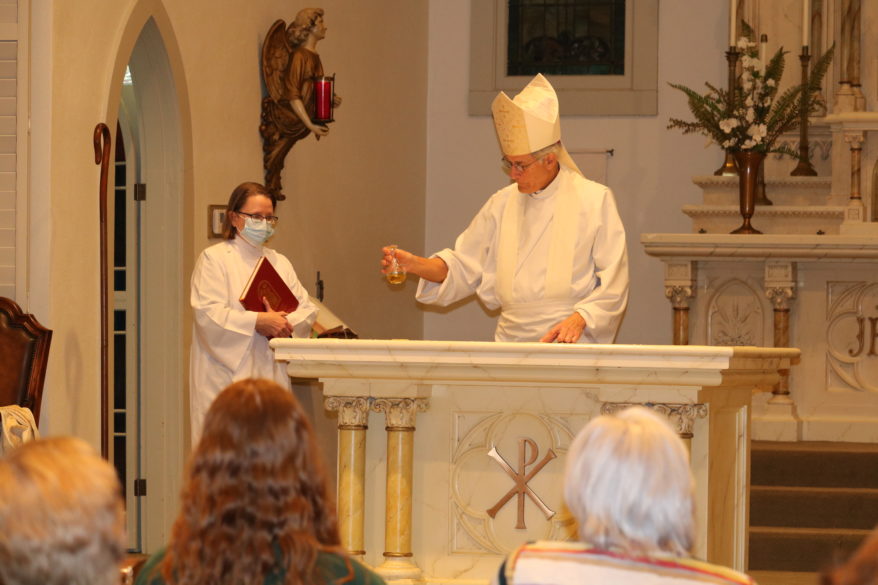
“They didn’t break the windows … they could have caught the church on fire, when they destroyed Mary next to the candles,” said Faulkner, who also works for the parish in communications. “So, we were blessed. It is amazing they didn’t demolish some of the other things they could have,” she concluded.
According to the USCCB at least 120 incidents, like the one occurring at Immaculate Heart, have occurred across 31 states and the District of Columbia since May 2020. Incidents include arson, statues beheaded, limbs cut, and smashed and painted, gravestones defaced with swastikas and anti-Catholic language and American flags next to them burned, and other destruction and vandalism. The conference even has a dedicated page on its website listing news stories that detail vandalism by month, since they began tracking incidents in May of 2020.
Pastor of Immaculate Heart, José de Jesús Sánchez expressed his “shock and grief” over the break-in over social media to the Catholic community, alerting them of the destruction in his parish. He was away at a family wedding in his home country of Mexico at the time of the incident.
People were hit hard by the images shared by Father Sánchez, including Bishop Joseph Kopacz, who said “at the same time, much prayer has been offered” from those across the diocese through the power of social media.
Amid all of the destruction at Immaculate Heart, Bishop Kopacz traveled to the parish on Wednesday, Feb. 1 to reconsecrate the church.
“We will reconsecrate this church once again to God in the Lord,” said Bishop Kopacz. “With great faith, hope and love with the desire to truly go forward, knowing that we have reconciled on a very deep level.”
Some in the parish, felt that the intent behind the destruction was to have parishioners lose their faith but the faith of the Immaculate Heart community is strong.
“We give thanks for this gift of faith, that can be assaulted, that can be hurt, but cannot be overcome in the Lord,” said Bishop Kopacz.
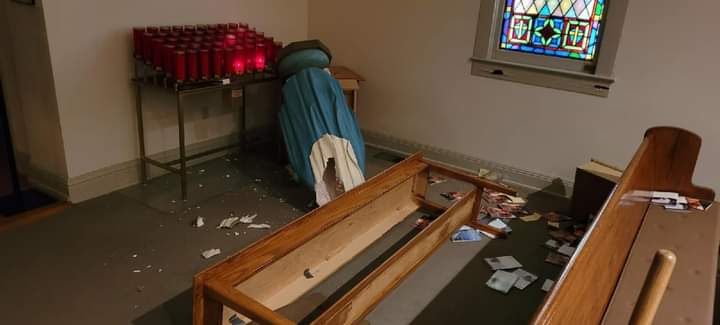
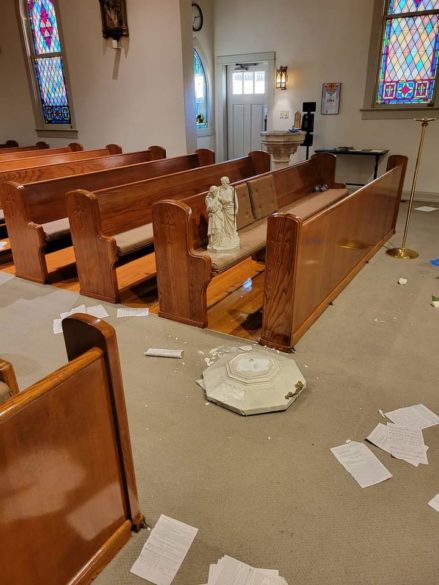
During his homily, Bishop Kopacz spoke of the destruction and evil that occurred within the walls of the church, mentioning the overturned pulpit and altar.
“The Word of God, another sacred part of who we are, was overturned, as if to say ‘We don’t want this Word proclaimed from this pulpit,’” said Bishop Kopacz, likening the destruction as malice. “That’s not just juvenile, ‘let’s just wreak a little havoc in this building.’”
Additionally, mentioned was the overturned altar and disturbed sacrament with Bishop Kopacz stating that “it was a deliberate blow to all that is sacred to us.”
As a part of the reconsecration of the church, Bishop Kopacz took great care in anointing the altar and with Chrism, in addition to the use of holy water to renew the baptismal promise of those present. “This seeks to make right, what has been wronged,” he said.
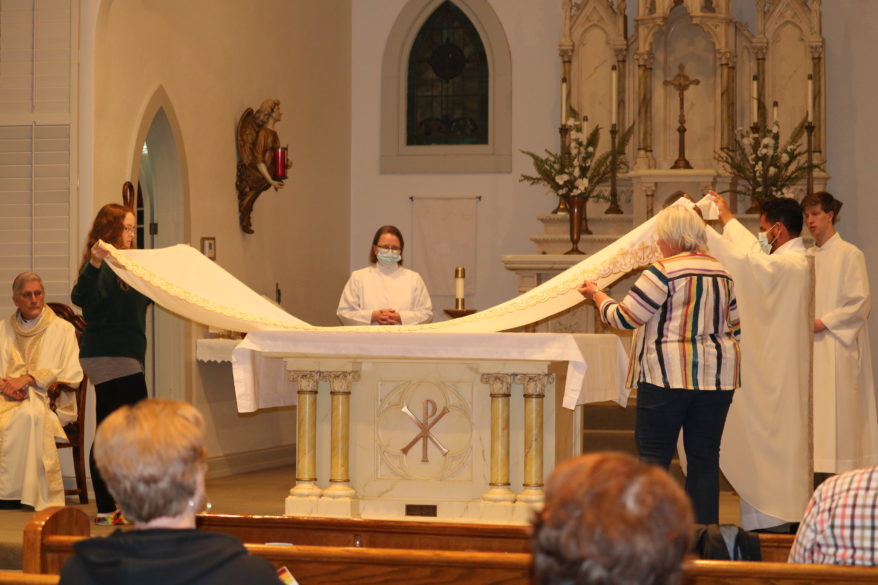
“Our altar represents Christ – it is Christ. … In the anointing, we are allowing the Lord to again come before us in a most powerful way to be our Good Shepherd and for us to know Him. For us to then enter deeply into the mystery of his life. … Heaven and earth are joined together each time we celebrate the Eucharist.”
After the Mass, parishioners like Faulkner expressed their gratitude and were moved by the beauty in the care of the reconsecration.
“I have never seen anything like it. It was extremely moving and beautiful,” said Faulkner.
Father Sánchez gave thanks for the experience of the reconsecration and was grateful for the feeling of hope, also witnessing a consecration of a church for the first time. “It was really beautiful and we know that we are not alone.”
“It is a new opportunity for all of us in the Body of Christ … and we can say to the enemy that if Christ is with us, who is against us.”
Parish coordinator and director of religious education, Emelia Joseph, who has worked tirelessly getting new keys, meeting with police officers and more in the wake of the break-in, is thankful for the support of the Greenwood community and the people of the diocese.
“We know through the grace of God and all the people who have contacted us, with prayer and their support, that we are not only going to rally through this, but we are going to be stronger than ever.”
